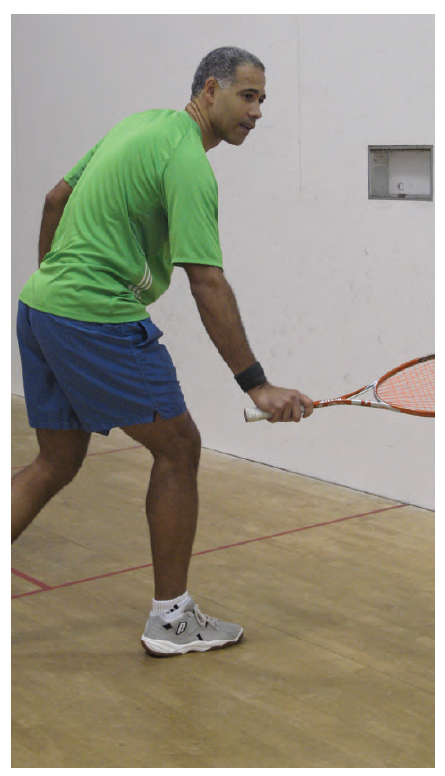By Candace H. Chemtob, MS, RD, LD, CSSD

Squash players “peak” later than many other high intensity sports. Currently, eight of the top ten male squash professionals are over thirty years old. In comparison, only two of the top ten tennis professionals are over thirty. The average age of other high intensity sports, such as professional basketball and football players, is approximately twenty-seven years old. Squash defies an abundance of research that suggests athletic performance should begin to decline at twenty-five years old. While the reasons for this “late” peak in squash may be debatable, this is undoubtedly good news for non-professional players as well.
Reaching “peak performance” later is certainly a benefit for squash players as it provides the opportunity to improve over the years. Furthermore, playing squash competitively and training hard may slow down the “aging” process. Competitive “older players” (average age forty-two years old) were shown to have similar blood pressure, heart rates, VO2 max, and lean body mass when compared to competitive players twenty years younger! These findings are astounding, and hopefully, will be a source of motivation to push yourself and be healthier and more fit as the years go by. (Reilly, et al, Science and Racket Sports, 1994).
Although a loss of muscle mass and strength is expected with age, research has shown this can be reversed even if you are not in top shape. In a twelve-week strength training program, non-conditioned men ages sixty to seventy-two years old showed significant increases in muscle strength, as measured by extensor and flexor strength, of 107 to 226% respectively. And if that is not enough encouragement, total muscle area increased by 11.4% (Frontera, J Appl. Physiol, 1988). Whatever your age or fitness level, it is not too late to reverse the effects of aging and improve your strength and fitness.
The protective health benefits of being active and playing squash through the years are numerous and extend past athletic performance—squash can also help players maintain a healthy weight. Taking into consideration that 69% of Americans are overweight or obese (CDC), this is not something that should be taken too lightly. Being overweight increases mortality for all causes, including high blood pressure, heart disease, cancer, and the list goes on and on. Playing squash promotes successful weight management, not only by burning an enormous amount of calories on the court, but it can also increase your metabolism 24/7. Typically, aging leads to a decrease in resting metabolic rate (RMR) with the primary cause being the loss of metabolically active muscle mass. As previously mentioned, playing squash and/or strength training will help you to preserve or improve your muscle mass and, therefore, keep you burning more calories even as you sleep.
There are many things that make squash a great sport! While the health benefits of playing squash may not be foremost on the minds of players, it is a sport that will keep you fit and healthy for years to come.





